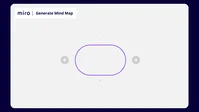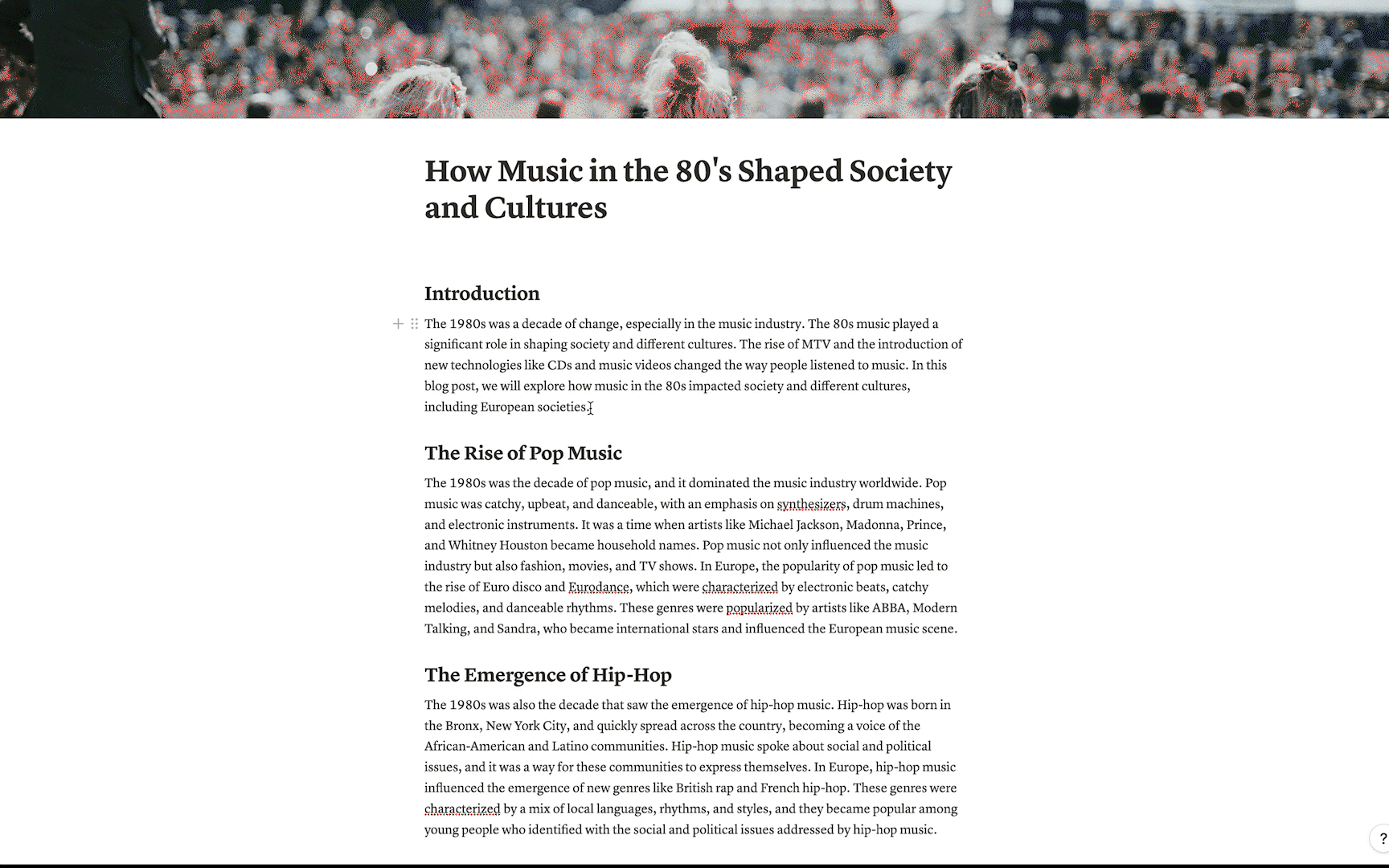Insights
The Power of Prompts: How We're Using AI
We're getting familiar with these tools and seeing how they can help us be more creative with AI. As with any new colleague, we want to figure out how to work well together, get to know each other, and make stuff. Especially, if that colleague happens to be the ultimate problem solver.

From ‘Do-er’ to ‘Thinker’
Using massive computing power to come up with radical new designs is changing the game for designers. It's a bit like having a super creative computer sidekick that does things we never could have imagined. The best part? Instead of waiting for inspiration, our robot friend just goes — no questions asked.
When given a set of design challenges AI can search through thousands of options to find the best ones. And since it explores so many options, it often finds solutions that a we might not have thought of. Allowing us to choose from a small selection of options that the computer predicts will work the best.
“AI output is mediocre if you give it poor instructions.”
And while robots might not take all of our jobs just yet, we should prepare ourselves for what's to come. For some of us, it might mean taking on a different role. Basically, letting computers do what computers are good at, and people do what people are good at. Basically, going from ‘do-er’ to ‘thinker’. Because AI will always need context. There are endless nuances that we have to weigh when making decisions. It will still be up to us to decide what works in a given situation.
Talking to Robots
There are a million and one ways to do just about anything. So giving a new colleague short and vague instructions is the quickest way to being let down. If someone doesn’t know how you do things, chances are they will do it differently than you. So why on earth would we do the same for our new AI colleagues? AI output is mediocre if you give it poor instructions.
“The only way AI will ever come close to your expectations is if you explain your taste. Unless you tell ChatGPT about your Dieter Rams tattoo, it won’t know. ”
Garbage in = garbage out. But understanding what to ask, how to ask it, and what the limits are can be pretty daunting. Give it vague and one line prompts and the output is gonna be pretty mediocre. But provide specific constraints and directions and it can feel like magic. We need to behave accordingly and treat it like the robot intern that it is: Extremely capable, but no clue about your particular situation.
In most cases, it helps to explain what you need, why need it, and how you want it. The more precise and descriptive your prompt, the better the output. Imagine yourself in the role of a teacher. Give it as much context as it needs. And any teacher worth his salt knows to give their students not just direction, but inspiration as well. So explain who or what you want to reference. Be generous with your wording. The only way AI will ever come close to your expectations is if you explain your taste. Unless you tell ChatGPT about your Dieter Rams tattoo, it won’t know. (That wording actually works with ChatGPT btw).
From research to synthesis and ideation, we are using it across the spectrum. Imagine your own ‘Wolf’ from Tarantino’s Pulp Fiction. Portrayed by Harvey Keitel, the Wolf is the ultimate problem-solver. And while we don’t need to dispose of any bodies just yet, having someone around who will take care of things can be very helpful. Here are some exmaples of the ways we’re using AI:
🪄 Idea Engine
AI can help discover unexpected ideas to help get the ball rolling. Request a ton of them and filter later.
Example 1: Write 20 titles and subtitles for my new [description of product]. It must be eye catching, short and friendly.
Example 2: My customers are struggling with [pain point], generate ideas for optimizing the user experience of our [description pf product].

👔 Expert adviser
Get help from some of the best mentors in the world. Ask for strategic advice from experts outside your own domain, from CEOs to specialists.
Example 1: A team of CEOs of Fortune 500 companies is asked [question]. Generate instructions and strategies on how to solve the [question] as if those CEOs answer the question. Display the company name and the name of the CEO before sharing the person's answer. Provide links to sources.
Question: [Insert here]
Example 2: I want you to act as a Chief Executive Officer for a hypothetical company. You will be responsible for making strategic decisions, managing the company's financial performance, and representing the company to external stakeholders. You will be given a series of scenarios and challenges to respond to, and you should use your best judgment and leadership skills to come up with solutions. Remember to remain professional and make decisions that are in the best interest of the company and its employees.
Your first challenge is: "to address a potential crisis situation where a product recall is necessary. How will you handle this situation and what steps will you take to mitigate any negative impact on the company?"
🔬 Analyzer
Get a first draft of research by generating an in-depth analysis on complicated topics.
Example 1: Analyze the current state of [industry] and its trends, challenges, and opportunities, including relevant data and statistics. Provide a list of key players and a short and long-term industry forecast, and explain any potential impact of current events or future developments. Come up with new features/products to retain customers and market share.
Example 2: Offer a detailed review of a [specific software or tool] for [describe your business]
🧪 Stress-tester
Invite a second pair of eyes and challenge your ideas and concepts from different angles
Example 1: What are the challenges I might face when doing [your idea]?
Example 2: What is required to start a [your idea]?
🎓 Expert teacher
Accelerate your learning by getting helpful metaphors or thought provoking questions.
Example 1: Help me draw parallels between [topic or skill] and unrelated domains, promoting a deeper understanding and the ability to apply knowledge in novel situations.
Example 2: Guide me on how to formulate effective questions related to [topic or skill] that will promote deeper thinking and stimulate curiosity.
🧹 Clean-up crew
People are messy. Our work is messy. AI is great at distilling information, catching typos, recommending improvements, or rewriting stuff it to make it better.
Example: I want you to act as a proofreader and writer. I'll provide you with an extract.
Proofread for grammatical errors and make sure it is written clearly. Phrases that can be written more clearly should be done so. Write the extract with the relevant changes and share a list of improvements made.
Extract: "[Insert extract]"

AI will be an invaluable tool in many fields, and design will be no exception. It can assist in various aspects, such as data analysis, prototyping, and testing, enabling more informed decisions and improved efficiency. So designers need to focus on their human skills, such as critical thinking, relationship building, coordination, and orchestration, to remain relevant in the AI age. As Brad Frost said, "Designers and developers who think of their jobs as rectangle creators have a lot to be worried about. But those who think of their jobs as solving problems - and incidentally have to create/wield some rectangles in order to solve those problems - have less to fear." Because if AI can create high tech blueprints for a drone chassis, it will be able to create some well-crafted UI without moving a muscle.
“Designers and developers who think of their jobs as rectangle creators have a lot to be worried about”
– Brad Frost
Furthermore, instead of taking away jobs, AI could actually create more demand for better design. Not too long ago, we we’re all blown away by impressive 3D renders or really good ‘deepfakes’. But now, just a few months later, we scroll past these images without a second glance. As Packy McCormick pointed out, "Increase the supply of services for which latent demand exists, and people should consume those services more frequently." With the increased supply of work created by AI, there could be more demand for human skills, such as figuring out what to work on and improving the overall quality of design.
In conclusion, AI is undoubtedly set to revolutionize the design industry, but designers are still indispensable. Machines without people don't make sense. By focusing on their human skills, designers can stay ahead of the game and use AI to their advantage to create better designs.
So don’t try to compete with AI. Embrace it. Work with it to unlock new levels of creativity and productivity. Because AI won't replace you – but a person using AI just might.
Curious about our methodology or how to use AI to accelerate your business? Let’s have a coffee.